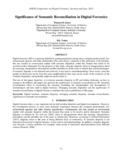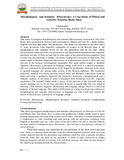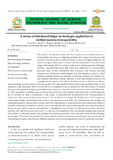| dc.description.abstract | Digital forensics (DF) is a growing field that is gaining popularity among many computer professionals, law
enforcement agencies and other stakeholders who must always cooperate in this profession. Unfortunately,
this has created an environment replete with semantic disparities within the domain that needs to be
resolved and/or eliminated. For the purpose of this study, semantic disparity refers to disagreements about
the meaning, interpretation, descriptions and the intended use of the same or related data and terminologies.
If semantic disparity is not detected and resolved, it may lead to misunderstandings. Even worse, since the
people involved may not be from the same neighbourhood, they may not be aware of the existence of the
semantic disparities, and probably might not easily realize it.
The aim of this paper, therefore, is to discuss semantic disparity in DF and further elaborates on how to
manage it. In addition, this paper also presents the significance of semantic reconciliation in DF. Semantic
reconciliation refers to reconciling the meaning (including the interpretations and descriptions) of
terminologies and data used in digital forensics. Managing semantic disparities and the significance of
semantic reconciliation in digital forensics constitutes the main contributions of this paper. | en_US |




